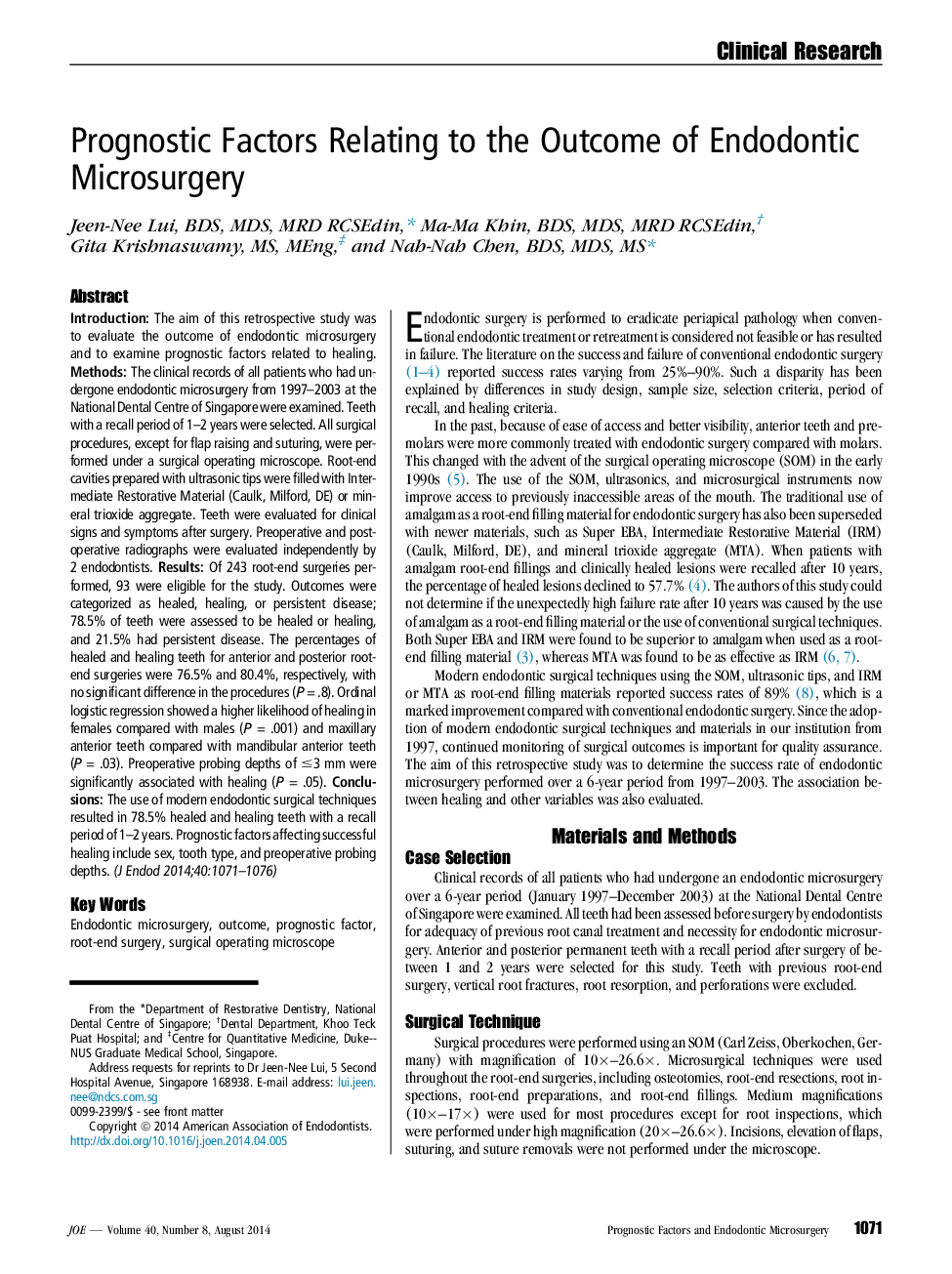| Article ID | Journal | Published Year | Pages | File Type |
|---|---|---|---|---|
| 3146727 | Journal of Endodontics | 2014 | 6 Pages |
IntroductionThe aim of this retrospective study was to evaluate the outcome of endodontic microsurgery and to examine prognostic factors related to healing.MethodsThe clinical records of all patients who had undergone endodontic microsurgery from 1997–2003 at the National Dental Centre of Singapore were examined. Teeth with a recall period of 1–2 years were selected. All surgical procedures, except for flap raising and suturing, were performed under a surgical operating microscope. Root-end cavities prepared with ultrasonic tips were filled with Intermediate Restorative Material (Caulk, Milford, DE) or mineral trioxide aggregate. Teeth were evaluated for clinical signs and symptoms after surgery. Preoperative and postoperative radiographs were evaluated independently by 2 endodontists.ResultsOf 243 root-end surgeries performed, 93 were eligible for the study. Outcomes were categorized as healed, healing, or persistent disease; 78.5% of teeth were assessed to be healed or healing, and 21.5% had persistent disease. The percentages of healed and healing teeth for anterior and posterior root-end surgeries were 76.5% and 80.4%, respectively, with no significant difference in the procedures (P = .8). Ordinal logistic regression showed a higher likelihood of healing in females compared with males (P = .001) and maxillary anterior teeth compared with mandibular anterior teeth (P = .03). Preoperative probing depths of ≤3 mm were significantly associated with healing (P = .05).ConclusionsThe use of modern endodontic surgical techniques resulted in 78.5% healed and healing teeth with a recall period of 1–2 years. Prognostic factors affecting successful healing include sex, tooth type, and preoperative probing depths.
